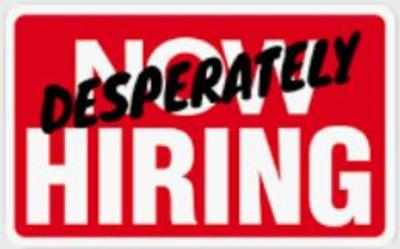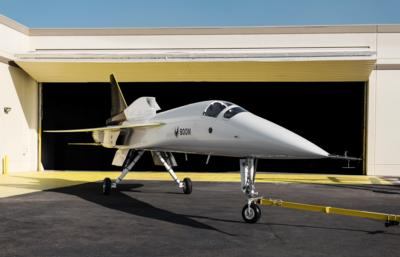Wed, May 18, 2022
Workforce Shortages Continue To Ripple Through Air Industry
The long-lamented pilot shortage, further exacerbated by the arrival of COVID-19 and the measures airlines took to reduce operating expenses by jettisoning personnel through early retirement and furloughs appears to be knocking hard at the other side of the cabin door.

However, the ecosystem of (mostly smaller) manufacturer, maintenance, technical, and support staff are also feeling the pinch, and as recently as last week, their representatives have been trying to get the attention of congress to address “providing more training opportunities, such as apprenticeships through community colleges”, in addition to more government investing in STEM education, reskilling current employees, enhancing training efforts by expanding the talent pool, and increasing diversity, equity, and inclusion in the aerospace and defense workforce.
Mr. Eric Fanning, President and CEO of Aerospace Industries Association (AIA), an advocacy group representing over 300 aerospace and defense entities, highlighted their member-Certified Aviation Services (CAS) program with San Bernardino Valley College in California and the BAE Systems-MyTurn partnership as two examples of successful programs geared towards addressing staffing shortage. Mr Fanning further stated that a reform of the Federal Work Study Program may be helpful in reaching the disadvantaged and underserved.

Boom Supersonic CEO Blake Scholl reiterated that “a critical lesson the company leaned through the pandemic is the importance of domestic manufacturing and its supply chain”. Others called for additional federal funding for technical education and community college programs to help replenish the workforce pipeline for small companies. However, investments often typically go where significant growth is expected, hence the small mom and pops are likely to fall through the cracks while the imbalance continues to support the larger entities, and we have not even begun to address the ‘minimum wage’ while trying to remain competitive. For too many years, corporations have sought cheaper labor/materials overseas to reap large profits and now find themselves in a situation entirely of their making, and the common refrain is for government to come to the rescue? Why not have the industryy fix the problem it created? This debate/discussion is still in first gear.
More News
Cooperative Surveillance Any surveillance system, such as secondary surveillance radar (SSR), wide-area multilateration (WAM), or ADS-B, that is dependent upon the presence of cert>[...]
Aero Linx: OX5 Aviation Pioneers Incorporated in 1955 as a Pa 501 (c)(3) Not for Profit Corporation, the OX5 Aviation Pioneers is dedicated to bringing before the public the accomp>[...]
The Pilot Appeared To Regain Control After Six Rotations And Attempted To “Fly Out” Inverted But Had Insufficient Altitude On November 8, 2025, at 1038 eastern standard>[...]
From 2018 (YouTube Edition): Aero-News Talks With The Airplane's Builder One of the many unique airplanes at AirVenture 2018 was a 1/3-scale B-17 bomber built by Jack Bally, who ta>[...]
Aero Linx: Society of U.S. Army Flight Surgeons (SoUSAFS) The Society of US Army Flight Surgeons (SoUSAFS) serves to advance the science and art of Aerospace Medicine and its allie>[...]
 ANN's Daily Aero-Term (12.04.25): Cooperative Surveillance
ANN's Daily Aero-Term (12.04.25): Cooperative Surveillance ANN's Daily Aero-Linx (12.04.25)
ANN's Daily Aero-Linx (12.04.25) NTSB Prelim: Extra Flugzeugproduktions EA 300/SC
NTSB Prelim: Extra Flugzeugproduktions EA 300/SC Classic Aero-TV: The Bally Bomber - The All Time Ultimate Warbird Replica?
Classic Aero-TV: The Bally Bomber - The All Time Ultimate Warbird Replica? ANN's Daily Aero-Linx (12.05.25)
ANN's Daily Aero-Linx (12.05.25)




